Monteverdi’s Forest
The “Selva morale et spirituale”
Mantua 1610. After twenty years of exhausting service, court musician Claudio Monteverdi strove for a church music position which would promise him more stability. Faced with an imminent journey to Rome, he prepared a printed collection of music which he dedicated to Pope Paul V and which he hoped to be able to present to the Pope personally: a kind of church music calling card. Even though he was denied a papal audience, Monteverdi achieved something immortal with this collection: we refer of course to the publication, which included the Missa in illo tempore and the now frequently-performed Vespers of the Blessed Virgin. The latter in particular exerts an unbelievable fascination with its overarching tension between the various styles in the psalms and the linking concertos which are absolutely breathtaking. For me this is truly a high point of Western art music.
Claudio Monteverdi
Selva morale et spirituale
Salmi I
Carus 27.802/00
Claudio Monteverdi
Selva morale et spirituale
Salmi II
Carus 27.803
Despite being denied a papal audience, the publication of the collection was not without consequences for Monteverdi: in 1613 he successfully applied to succeed Giulio Cesare Martinengo (ca. 1565−1613) as maestro di cappella at San Marco in Venice. He obtained this position not only following a successful trial period, but also because of this collection of printed music. By then, much of Monteverdi’s music already existed in printed editions, but only one of these was relevant in supporting his application for this church music position – the 1610 sacred music publication containing the Vespers of the Blessed Virgin. Monteverdi now occupied one of the most important posts in church music in Italy, which he held until his death in 1643. His position meant that every year he had to provide music for a large number of magnificent church services, which were a part of the elaborate representation of the Serenissima Repubblica. At that time San Marco was not a cathedral, but the state church of the Republic of Venice. For these occasions, Monteverdi had at his disposal a large and, during his period in office, constantly growing ensemble: in 1643 it comprised 35 singers and 16 instrumentalists – without the frequently documented extra forces!
But after 1610 it was more than 30 years before Monteverdi published another collection of church music: this was to be his musical legacy, the Selva morale et spirituale of 1641. There was nothing special in the 17th century in calling a collection “Selva” (forest). In using this, authors wanted to emphasize the large number and the variety of their compositions. At the heart is Monteverdi’s “forest”, a collection with music for the mass and Vespers, like his 1610 printed edition of church music. However, this heart is framed by some sacred madrigals at the beginning and a sacred parody of his famous Lamento d’Arianna at the end. These additions, unusual for a printed edition of this kind, have been regarded, probably correctly, as having some connection with the dedicatee: music for the private devotions of the Emperor’s widow Eleonora Gonzaga, daughter of Monteverdi’s former employer Vincenzo Gonzaga in Mantua. For the heart of the Selva, the liturgical music, Monteverdi could evidently draw on a wide variety of resources. He includes not only all the requisite psalms for different Vespers on the feast days for male saints, but also offers several settings of many of the psalms, similarly for the Magnificat, for various Vesper hymns (for some of which Monteverdi, ever practical, provided several texts underlaid in order to give them multiple uses) and for the Salve Regina. And the mass at the beginning of the collection can likewise be varied with alternative settings of separate parts of the various sections.
In the large scale psalms, the first Magnificat and the Gloria, we can sense the imposing splendor of the Doge’s church. However, most of the instruments and some of the vocal parts can be omitted (“if it is necessary”, as Monteverdi wrote; but arranging the pieces for “normal” conditions was certainly not an idea he entertained lightly!). The psalms are distinctly different from those of 1610. The time of experimentation in the exciting years around 1600 was past, the compositions are more balanced, more mature. There is a clear separation between solo and choral passages, with the tutti passages displaying tremendous musical splendor. Even in the solo passages it is mainly the sonority, as opposed to virtuosity, which comes to the fore. The coherence within each composition is no longer achieved through the use of psalm tones, but rather through their inner dramatic structure. And we can also speak of Monteverdi’s musico-dramatic approach in relation to the solo works – whether it be the composed dialogue in Jubilet tota civitas or the Salve Regina, which has justifiably been described as the musico-dramatic presentation of a prayer.
Unlike the Vespers, a complete performance of the Selva is neither meaningful nor practicable: it is a repertoire from which quite different programs can be derived – both in terms of length, scoring, level of difficulty (which is moderate in many compositions), but also in terms of fundamental conception: possibilities would be to focus on either a feasible liturgical sequence or a musical exploration of different aspects of the Selva.

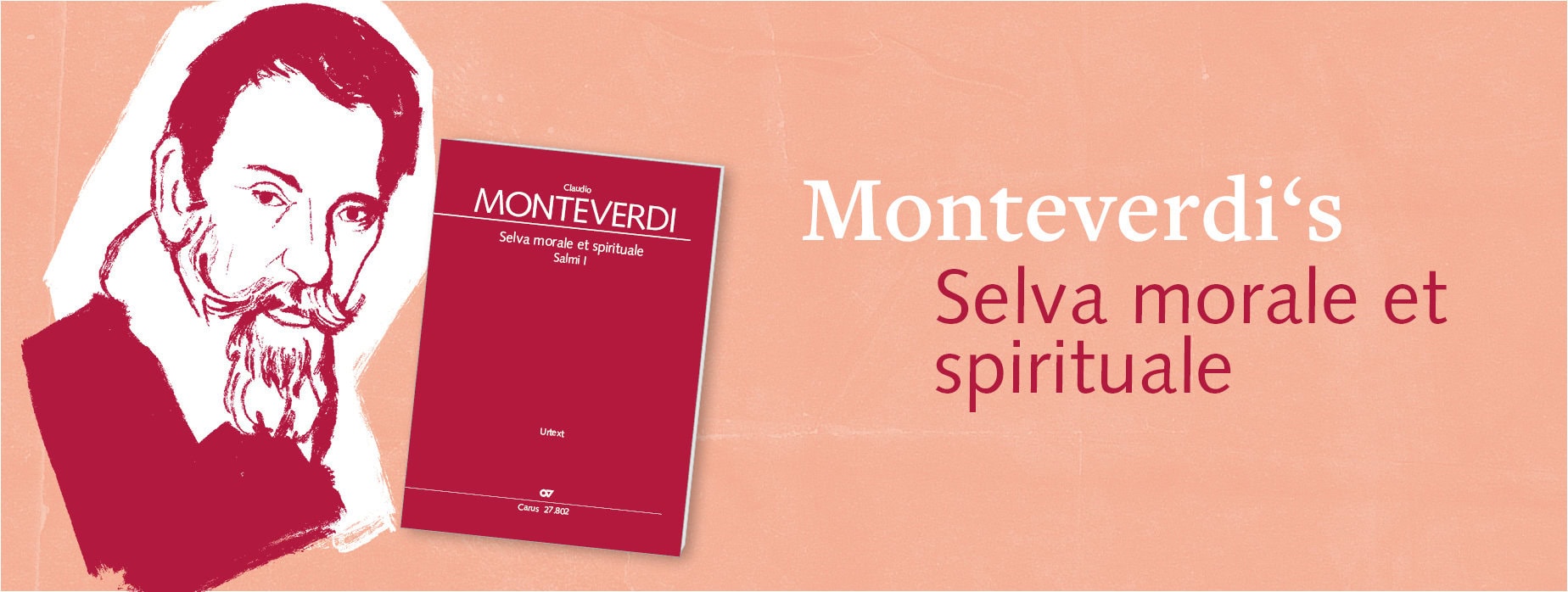
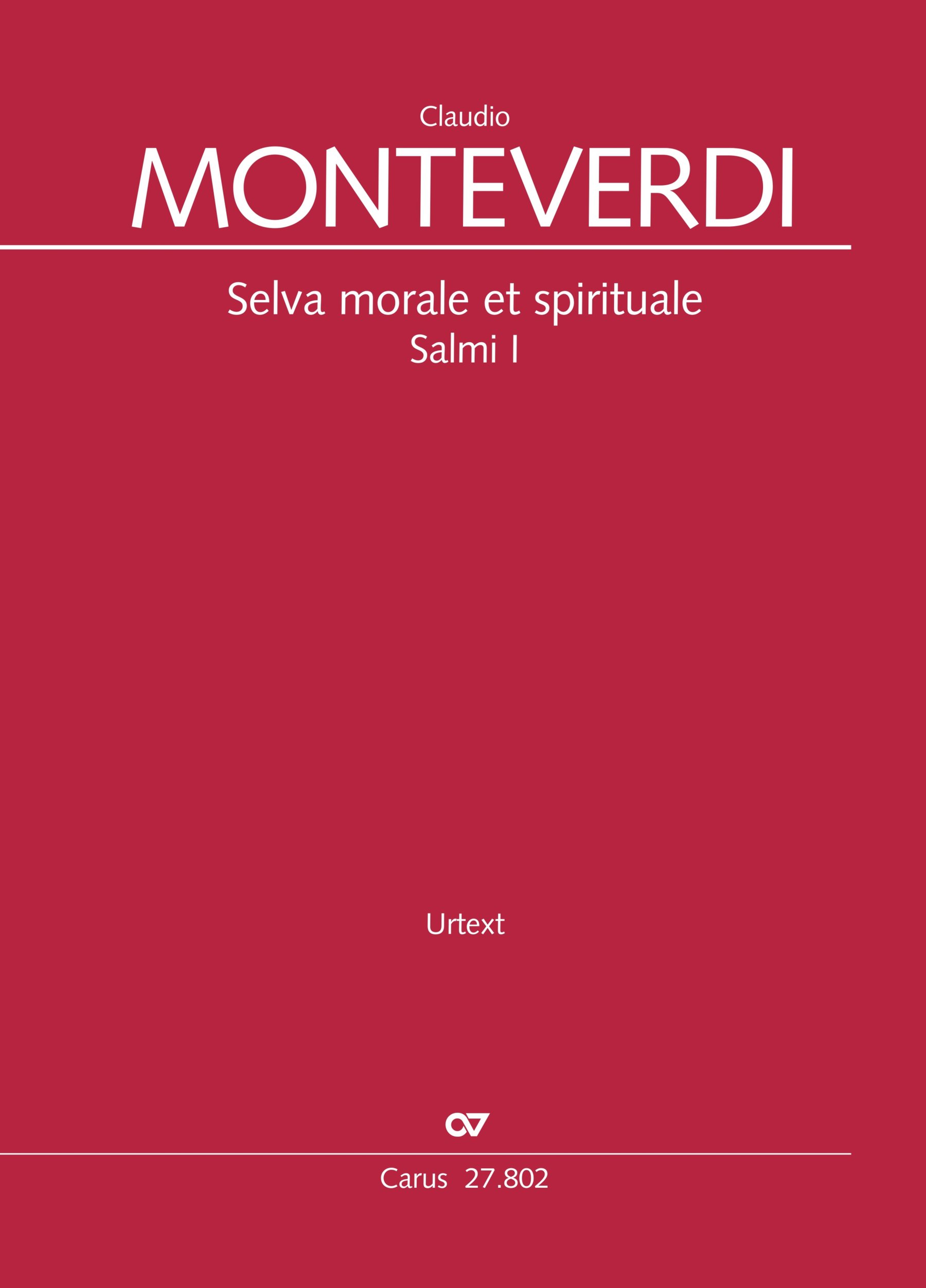
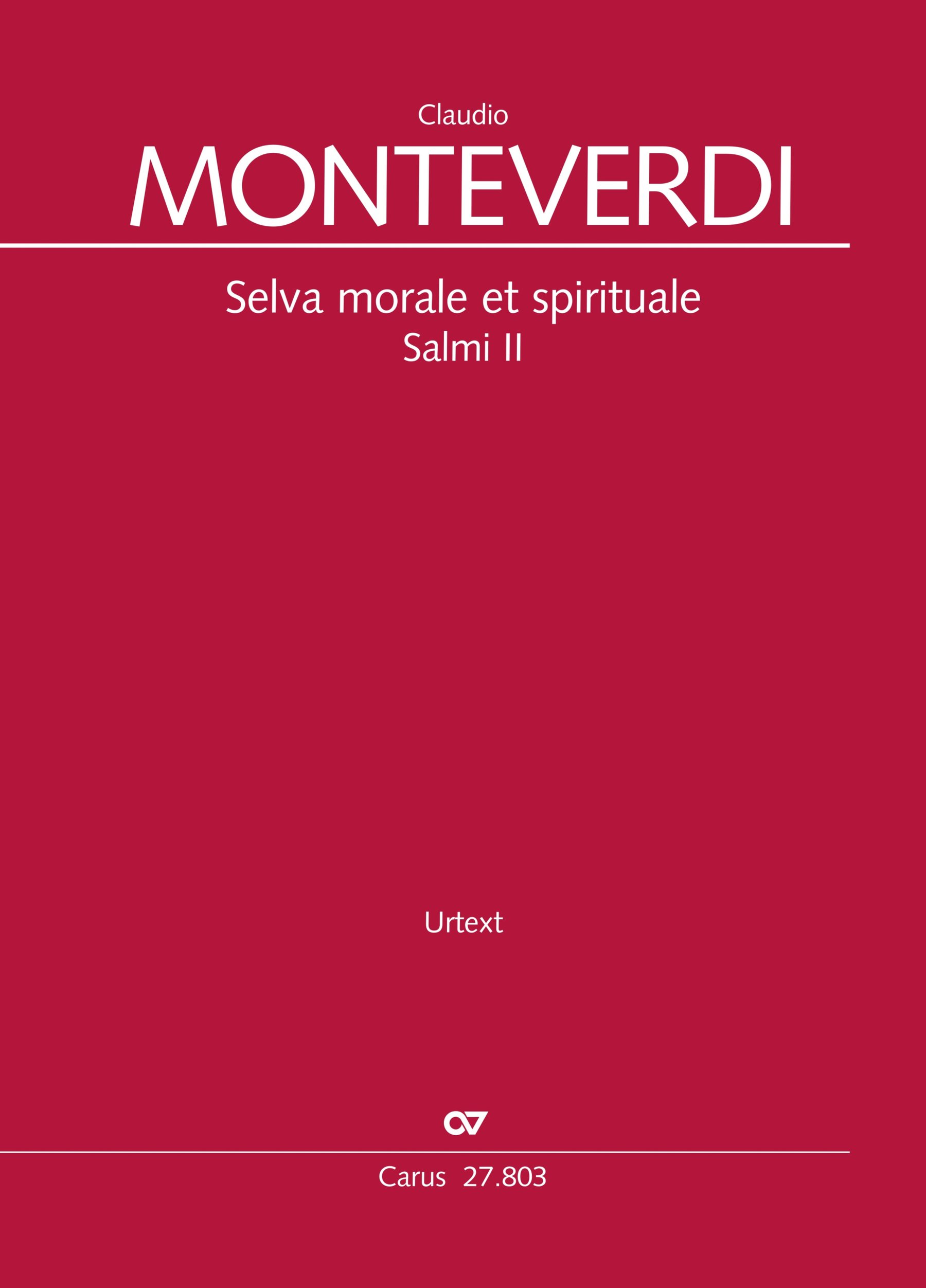

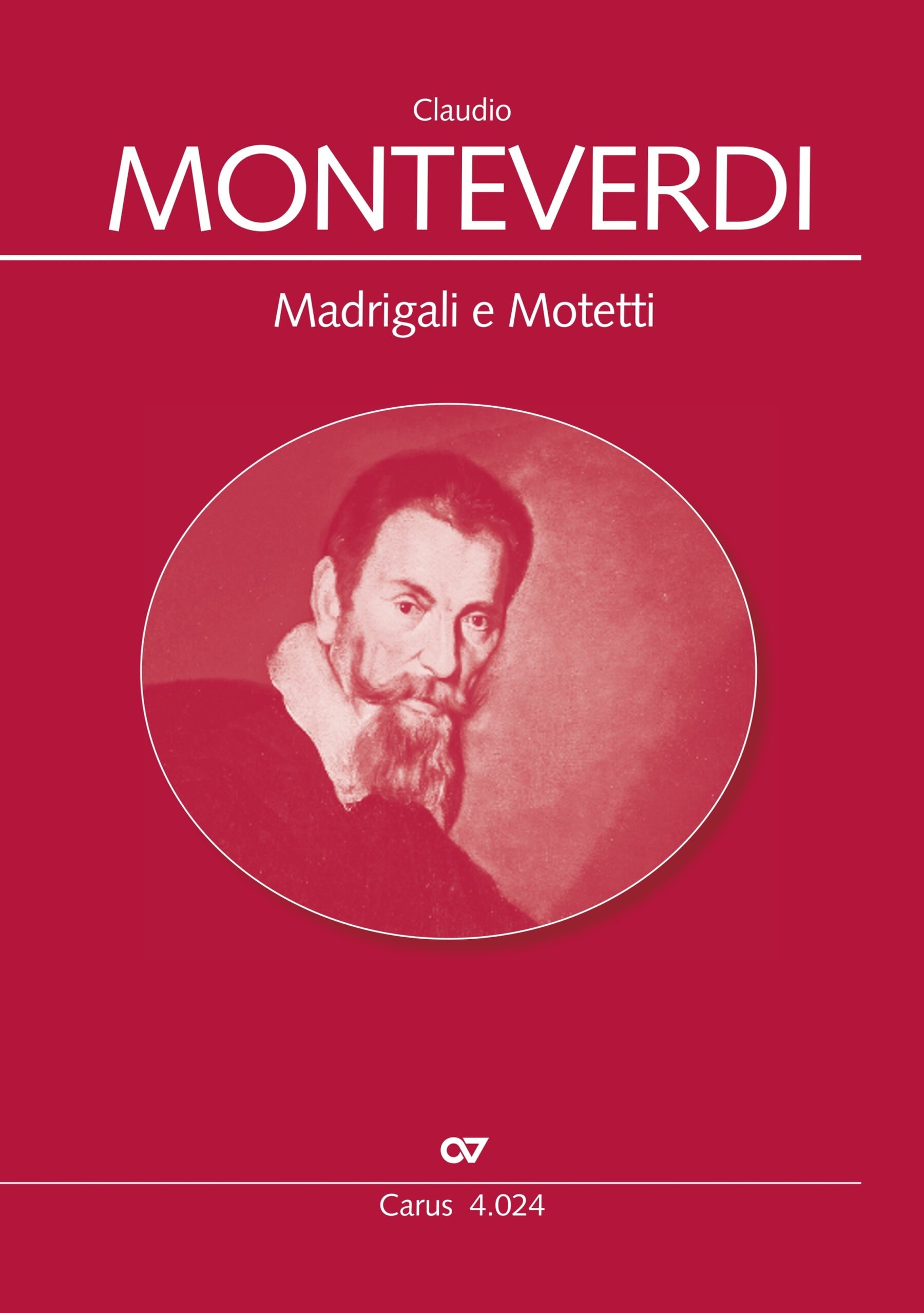 Monteverdi wrote almost exclusively vocal music. The choral collection is a compilation of 20 compositions: both secular madrigals and sacred motets. In addition, the collection also includes a number of famous madrigals to which one of Monteverdi’s contemporaries added Latin sacred texts soon after their publication.
Monteverdi wrote almost exclusively vocal music. The choral collection is a compilation of 20 compositions: both secular madrigals and sacred motets. In addition, the collection also includes a number of famous madrigals to which one of Monteverdi’s contemporaries added Latin sacred texts soon after their publication.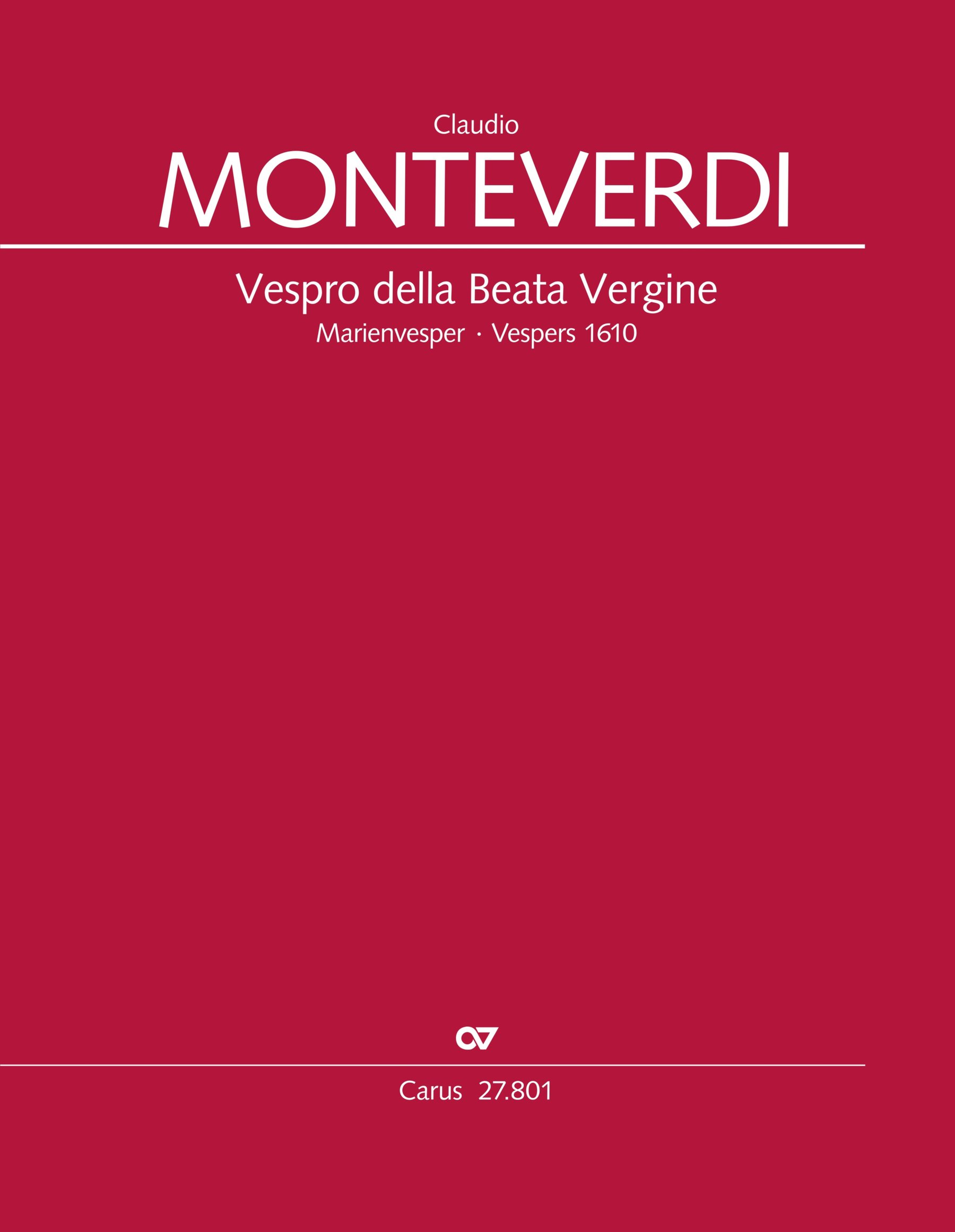 As with scarcely any other work of the 17th century, Monteverdi’s Vespers has found its way into today’s repertoire. Performance material is organized in a flexible manner to allow for the use of different instruments in those movements without obbligato instruments in order to reinforce the vocal parts and thus invites an individual musical approach to the challenge presented by Monteverdi’s Vespers.
As with scarcely any other work of the 17th century, Monteverdi’s Vespers has found its way into today’s repertoire. Performance material is organized in a flexible manner to allow for the use of different instruments in those movements without obbligato instruments in order to reinforce the vocal parts and thus invites an individual musical approach to the challenge presented by Monteverdi’s Vespers.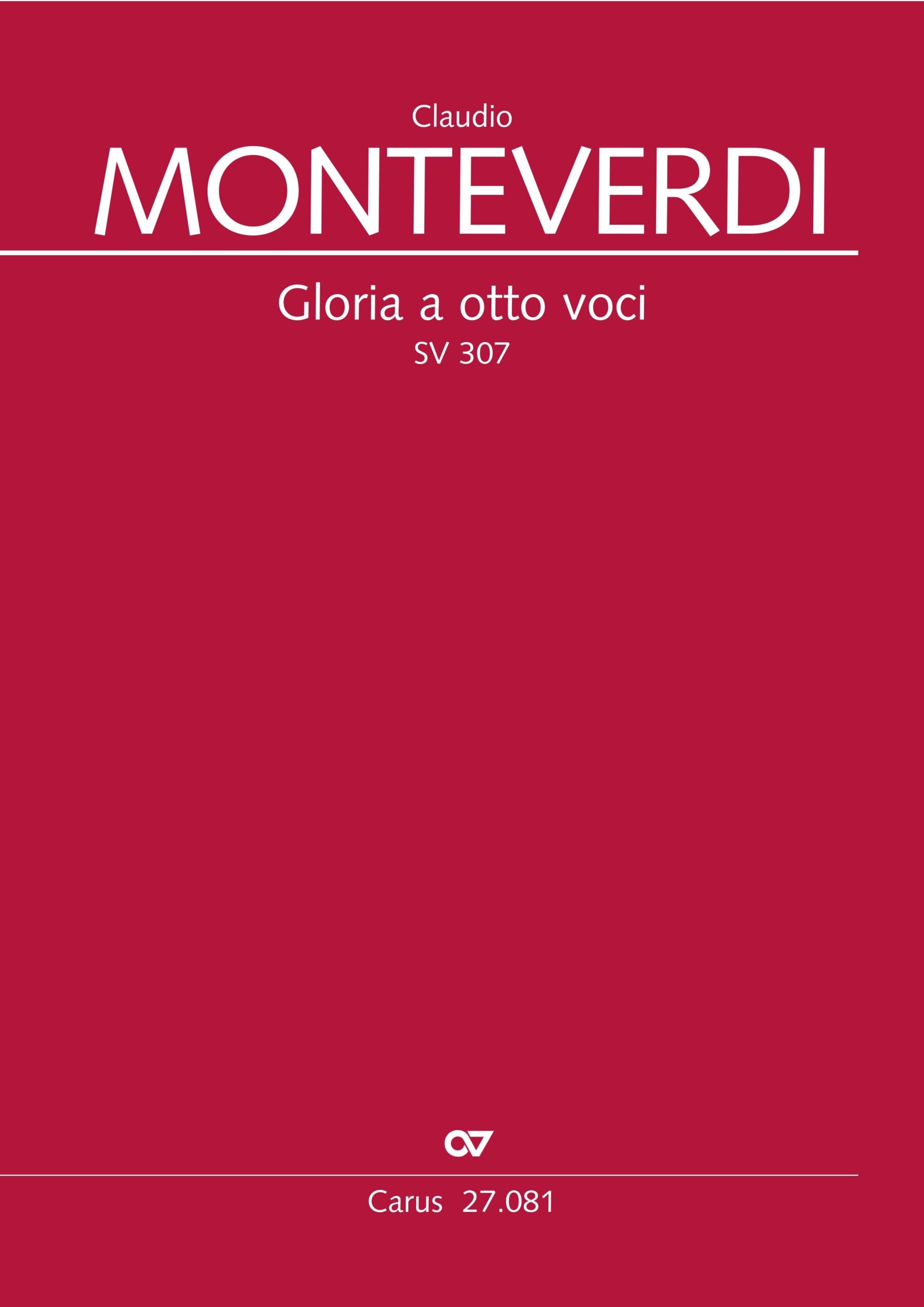 The Gloria for two four-part choirs arid continuo is one of the few among his works which were not published during Monteverdi’s lifetime but which have nevertheless survived the centuries. This richly fashioned composition, in which concertante passages for various groups of voices alternate with tutti sections, already suggests the later cantata mass. An artistic effect to be especially valued is the repetition of the joyful coloratura music of the opening section set to the concluding “in Gloria Dei Patris”.
The Gloria for two four-part choirs arid continuo is one of the few among his works which were not published during Monteverdi’s lifetime but which have nevertheless survived the centuries. This richly fashioned composition, in which concertante passages for various groups of voices alternate with tutti sections, already suggests the later cantata mass. An artistic effect to be especially valued is the repetition of the joyful coloratura music of the opening section set to the concluding “in Gloria Dei Patris”.
Leave a Reply
Want to join the discussion?Feel free to contribute!